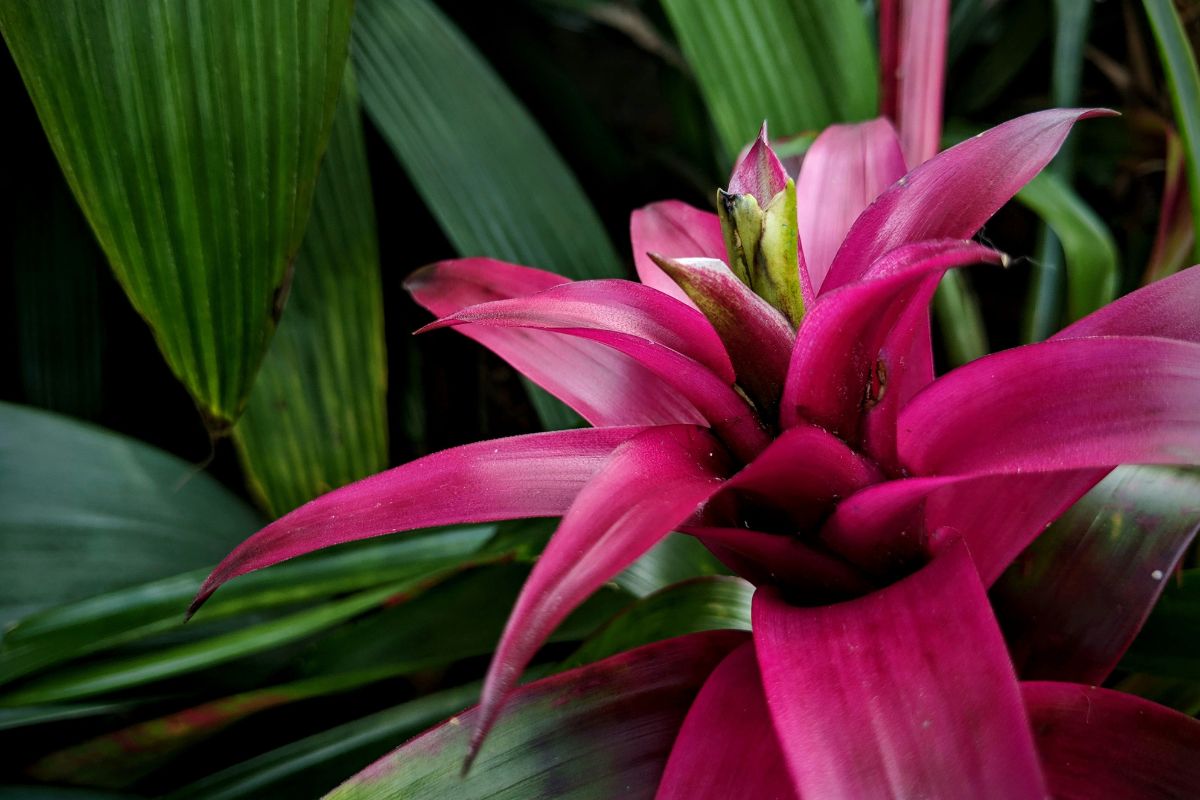Bromeliads Benefits and Care Guide
Bromeliads are exotic, eye-catching plants known for their unique foliage and vibrant, long-lasting blooms. Belonging to the Bromeliaceae family, these tropical plants originate from Central and South America. Their striking appearance, ease of care, and air-purifying qualities make them popular houseplants. In this article, we’ll explore the many benefits of bromeliads and provide a detailed care guide to help you keep these beauties thriving in your home or garden.
Benefits of Bromeliads

Air Purification
Bromeliads are natural air purifiers. They absorb toxins like benzene, formaldehyde, and carbon dioxide, converting them into oxygen through photosynthesis. They also release moisture into the air, helping to maintain a healthy indoor environment.
How It Helps:
- Bromeliads improve indoor air quality by filtering toxins.
- Increased humidity reduces respiratory issues and dry skin.
Tip: Place bromeliads in living spaces where air quality is crucial, such as bedrooms and offices.
Aesthetic Appeal
Bromeliads are celebrated for their dramatic appearance, with bold leaves and bright, long-lasting flowers. They come in various shapes, colors, and sizes, making them versatile decor elements for any interior or outdoor garden setting.
Design Ideas:
- Use bromeliads as focal points in home decor.
- Create a tropical-themed garden by pairing them with other exotic plants.
Low Maintenance
One of the best features of bromeliads is their low-maintenance nature. They adapt well to indoor conditions, making them perfect for beginners and busy plant lovers. Once established, bromeliads require minimal attention.
Why It’s Easy:
- They need minimal watering and thrive in a variety of light conditions.
- They can survive in low-humidity environments, although they prefer some moisture.
Longevity and Durability
Bromeliads are known for their long-lasting blooms, which can stay vibrant for months. Their leaves are tough and durable, making them resistant to common pests and diseases.
How It Helps:
- Their long bloom cycle ensures lasting beauty in your home.
- Strong leaves withstand environmental stress better than many other houseplants.
Environmental Impact
By growing bromeliads, you can contribute to the environment. These plants help reduce your carbon footprint by producing oxygen and absorbing pollutants. Additionally, they support biodiversity by attracting beneficial insects like bees and butterflies when grown outdoors.
Eco-Friendly Tip:
- Grow bromeliads in your garden to encourage local pollinators.
How to Care for Bromeliads
Although bromeliads are hardy, they do require specific care to thrive. Use these guidelines to keep your plant thriving and looking its best:
1. Light Requirements
Bromeliads thrive in bright, indirect light. Too much direct sunlight can scorch their leaves, while insufficient light may hinder blooming.
Light Tips:
- Place them near east- or west-facing windows indoors.
- Use sheer curtains to filter direct sunlight when needed.
2. Watering
Bromeliads have a unique watering method. They absorb water through their central “tank” or rosette. However, their roots also need occasional watering.
Watering Tips:
- Keep the central tank filled with fresh water. Empty and refill the container weekly to prevent water stagnation.
- Water the soil lightly when the top inch feels dry.
- Use distilled or rainwater, as bromeliads are sensitive to chemicals found in tap water.
3. Soil and Potting
Bromeliads prefer well-draining soil that mimics their natural environment. Use a mix designed for orchids or make your own using bark, perlite, and peat moss. Ensure the pot has drainage holes to avoid root rot.
Soil Tips:
- Use a fast-draining mix such as orchid bark mixed with potting soil.
- Repot only when the plant outgrows its current container or when new pups appear.
4. Temperature and Humidity
Bromeliads love warm, humid environments. Ideally, bromeliads should be kept in temperatures between 65-80°F (18-27°C). While they tolerate dry air, higher humidity will encourage healthy growth and flowering.
Humidity Tips:
- Increase humidity by misting the plant regularly.
- Use a humidifier or place the plant near a water source like a pebble tray.
5. Fertilizing
Bromeliads are light feeders and only need occasional fertilizing. Use a balanced liquid fertilizer diluted to half-strength during the growing season (spring and summer). Avoid over-fertilizing, as it can damage the plant’s leaves.
Fertilizing Tips:
- Fertilize monthly in spring and summer.
- Use a slow-release or liquid fertilizer labeled for houseplants.
6. Pruning and Maintenance
Bromeliads require minimal pruning. Remove dead or yellowing leaves to keep the plant looking fresh. Once the flowers fade, you can trim the bloom stalk, as the mother plant will eventually die back after flowering.
Pruning Steps:
- Cut off dead leaves or spent flowers with sterilized scissors.
- Allow the plant to focus on producing pups (new plants) after blooming.
7. Propagation
Bromeliads reproduce by producing pups, or offsets, at the base of the mother plant. Once the pups are about one-third the size of the original plant, they can be separated and replanted.
Propagation Steps:
- Wait until pups are 4-6 inches tall.
- Carefully use a sharp, sterilized knife to detach the pup from the mother plant.
- Replant the pup in fresh, well-draining soil.
Common Problems and Solutions
- Leaf Browning: Caused by overwatering or too much direct sunlight. Adjust the watering schedule and move the plant to a less sunny location.
- Root Rot: This occurs if the roots sit in waterlogged soil. Use a well-draining mix and avoid overwatering.
- Pests: Bromeliads are generally pest-resistant but can occasionally attract mealybugs or spider mites. Clean the leaves using a damp cloth, or apply insecticidal soap if necessary.

